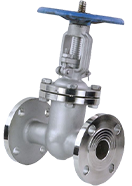center line butterfly valve
Understanding Center Line Butterfly Valves Design, Function, and Applications
Butterfly valves are essential components in various piping systems, known for their simple yet effective design. Among the diverse types of butterfly valves, the center line butterfly valve (CLBV) stands out due to its unique construction and operational advantages. This article delves into the characteristics, functionality, and applications of center line butterfly valves, highlighting their significance in modern industrial systems.
Design and Construction
A center line butterfly valve is characterized by its disc being mounted at the center of the pipe, which creates a balanced flow path. This design allows for efficient fluid control and minimizes turbulence through the valve. The disk, which is usually a circular plate, rotates around a vertical axis, enabling it to open or close the flow. The simplicity of the design contributes to ease of maintenance and durability, making it a preferred choice for many applications.
The sealing mechanism of center line butterfly valves varies among designs, with some utilizing elastomeric seals while others incorporate metal-to-metal sealing. This flexibility in sealing options ensures that the valve can cater to different pressure and temperature requirements, which is crucial in many industrial applications.
Operational Principles
The operation of center line butterfly valves is relatively straightforward. When the valve is closed, the disk lies perpendicular to the flow direction, effectively blocking it. To open the valve, the disk is rotated a quarter turn so that it aligns parallel to the flow. The result is a wide-open passage that allows for substantial flow with minimal resistance. This quarter-turn operation provides rapid opening and closing, allowing for quick response in process control.
One of the key benefits of a center line butterfly valve is its ability to provide a tight seal while being relatively lightweight compared to other valve types, such as gate or globe valves. This lightweight nature is significant in reducing the structural support requirements and makes it easier to integrate into existing systems.
Applications in Industry
center line butterfly valve

Center line butterfly valves find utility across a wide range of industries, including water treatment, food and beverage, petroleum, and HVAC systems. In water treatment facilities, for instance, they are employed to regulate the flow of water and various chemicals used in the treatment process. Their ability to provide a tight seal ensures that the chemicals are contained, preventing leakages that could lead to contamination.
In the food and beverage sector, hygiene and cleanability are paramount. Center line butterfly valves are made from materials compliant with food safety standards, ensuring that they do not introduce contaminants into the product stream. Their design allows for easy cleaning and sanitization, which is vital in maintaining high standards of food safety.
Additionally, in oil and gas operations, these valves are utilized for flow control in pipelines and processing systems. Their robustness and ability to withstand high pressures make them suitable for managing the challenging environments typical of this industry.
Advantages Over Other Valve Types
One of the significant advantages of center line butterfly valves is their low torque requirement. This characteristic means that smaller actuators can be used, resulting in cost savings both in initial setup and ongoing energy consumption. Furthermore, the design of the valve allows for effective flow control across a broad range of applications, providing versatility that other valve types may not offer.
The center line positioning of the disc minimizes the wear on the valve components, extending their operational life and reducing the frequency of maintenance checks. This durability makes them a sound investment for businesses looking to optimize their operations.
Conclusion
In summary, center line butterfly valves are a crucial component in many industrial applications due to their efficient design, operational simplicity, and versatility. Their ability to provide reliable flow control while being cost-effective makes them a preferred choice in a variety of sectors. As industries continue to seek solutions for optimizing processes and ensuring safety, the role of center line butterfly valves will undoubtedly remain significant in the engineering landscape.
-
The Key to Fluid Control: Exploring the Advantages of Ball Valves in Industrial SystemsNewsJul.09,2025
-
The Versatile World of 1, 2, and 3 Piece Ball ValvesNewsJul.09,2025
-
Stainless Steel Ball Valves: The Ideal Choice for Efficient Flow ControlNewsJul.09,2025
-
Optimizing Fluid Control with Ball Float ValvesNewsJul.09,2025
-
Manual Gate Valves: Essential for Control and EfficiencyNewsJul.09,2025
-
Everything You Need to Know About Butterfly ValvesNewsJul.09,2025
-
The Versatility of Wafer Type Butterfly ValvesNewsJul.08,2025




